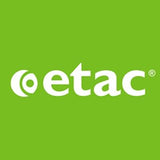
Who doesn`t love mooncakes? We all do and just wait for the mid -autumn festival to emerge every year to savour the delightful taste that comes with all the variations of mooncakes available. The creativity of the different options, the stunning and innovative boxing of the mooncakes and the way they are presented is mind blowing. Every establishment goes all out to come up with the best and most useful packaging and we just wait to be gifted with one so that these boxes can be kept as keepsakes after the mooncakes are eaten. We really look forward to mooncake buying a month before the celebrations when they are offered for sale.
Leaving all that aside – What do we know about this Mooncake festival? Apart from eating the mooncakes every year, here`s what I have learnt. The Mid-autumn Festival (or Zhong Qiu Jie in Mandarin), also known as the Mooncake Festival, falls on the 15th day of the eighth lunar month – hence the name Mid-autumn Festival. The festival is associated with the moon and “moon appreciation” parties because the moon is the brightest during this time. The festival also coincides with the end of the autumn harvest, marking the end of the Hungry Ghost Festival, which occurs during the seventh lunar month. This festival is the second most important festival to be celebrated in China after Chinese New Year and is also celebrated in Taiwan, Korea, Japan, Singapore, Vietnam, Cambodia, Malaysia, Indonesia, Thailand, and the Philippines.
What does the Mid-Autumn Festival symbolize? A little bit of history here first. 2000 years ago, the Mid-autumn Festival started as a post-autumn harvest celebration devoted to thanking the Gods. It all started during the Song dynasty with the tradition of worshipping the moon and Legends associated with the full moon became attached to this festival. The full moon is considered a symbol of reunion and so it is also called the Reunion festival. Shaped round like the full moon, mooncakes signify reunion, family, and harmony. So, the Chinese celebrate it by gathering for dinners, worshiping the moon, lighting paper lanterns, eating mooncakes and merrymaking in a nutshell. In a cosmopolitan country like Malaysia, the lighting and carrying paper lanterns has caught on with the children of other races too.
There are many legends attached to the origin of this Mid-autumn Festival and here`s one where mooncakes helped the start of a revolution. During the Yuan dynasty (AD 1280-1368) a Han Chinese rebel leader, Liu Bo Wen, planned to arouse the Han Chinese to revolt against the ruling Mongolians and end the Yuan dynasty. He gained permission to give gifts to his friends in different bases. These gifts were round moon cakes. Liu asked his subordinates to hide pieces of paper in the cakes with the date of the Han Chinese rebellion (the 15th night of the 8th lunar month). Liu got word to his people who found the revolutionary message when they cut open the moon cakes. They then set out together to overthrow the Mongolians, thus ending the Yuan dynasty.
Mooncakes are eaten during the Moon Festival. Without mooncakes, the festival is considered incomplete. This round pastry can contain various ingredients in a thin crust. Most of the flavours are sweet, with lotus seed paste or sweet bean paste in the centre. Enjoy this day on the 21 September and
Happy Mid-Autumn Festival! 中秋快乐! Zhōngqiū kuàilè!
![[5-7 December 2025] MyWellFair](http://ielder.asia/cdn/shop/articles/Dr_Kong_speak_at_My_Well_Fair_692e65ea-b60f-4628-9e7a-d4eb09da0256_700x700_crop_center.jpg?v=1765854001)





![[22 Jan 2026] Talks on Integrative Medicine and Home Improvement Tips](http://ielder.asia/cdn/shop/articles/afternoon_tea_with_AIM_Healthcare_f5300f6f-35d1-496a-ac5a-1d7f3cf80953_700x700_crop_center.jpg?v=1764334538)
![[8 January 2026] Managing Chronic Diseases with Integrative Medicine: A Collaborative Approach (Invitation to Healthcare Professional)](http://ielder.asia/cdn/shop/articles/afternoon_tea_with_AIM_Healthcare_c57790d2-8d2c-46d8-8a6f-51607e217ef2_700x700_crop_center.jpg?v=1764334504)





Leave a comment